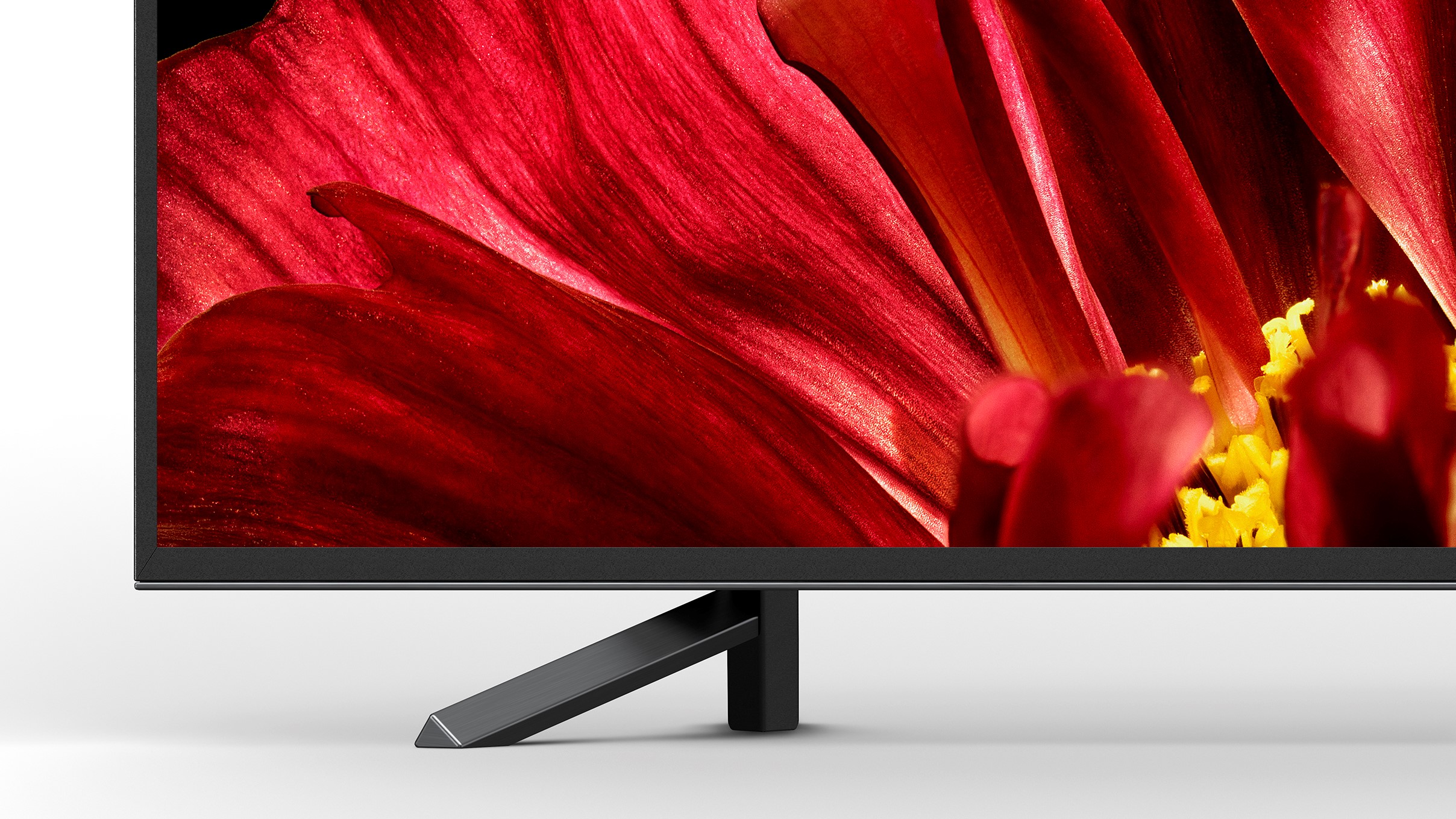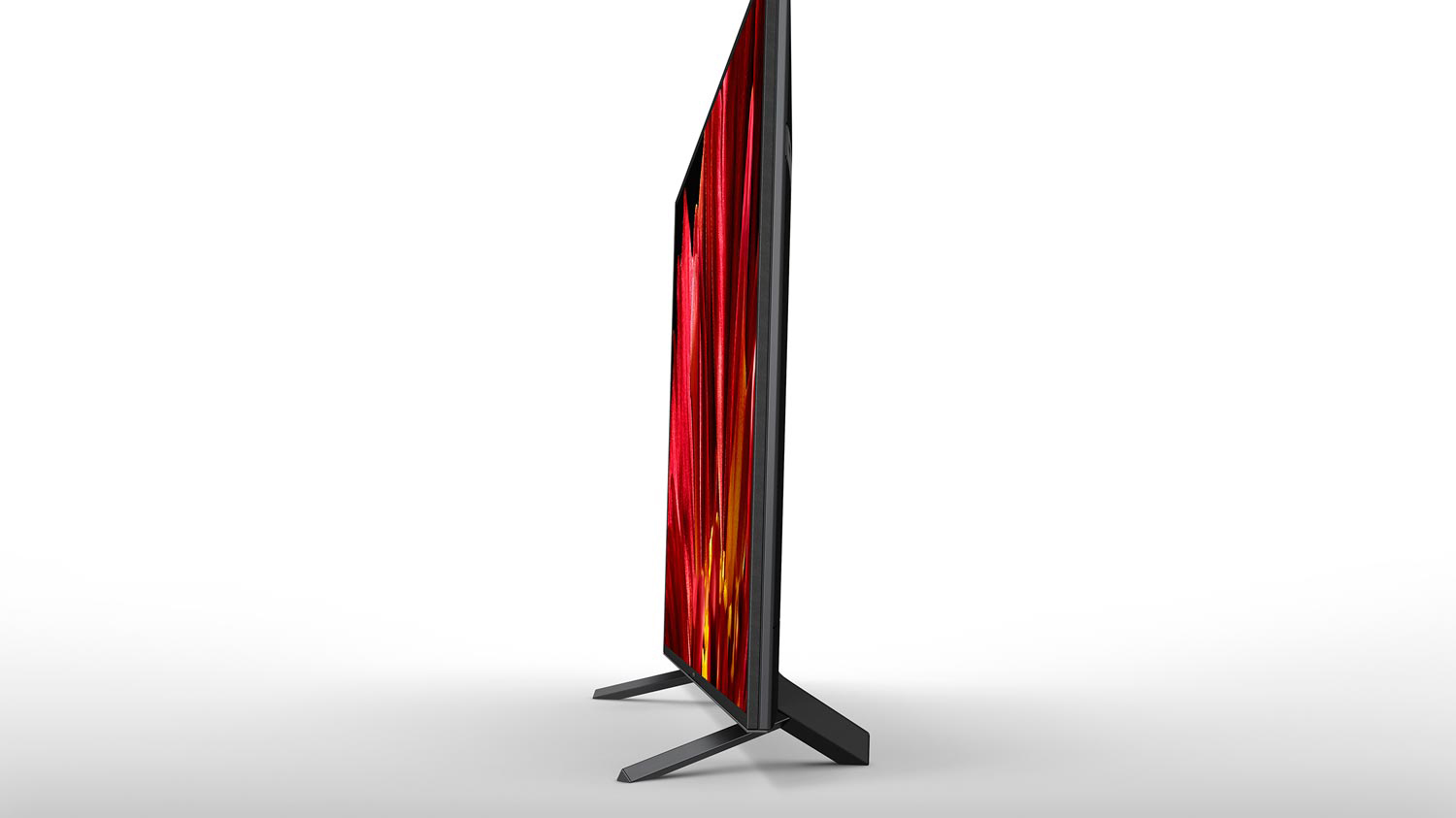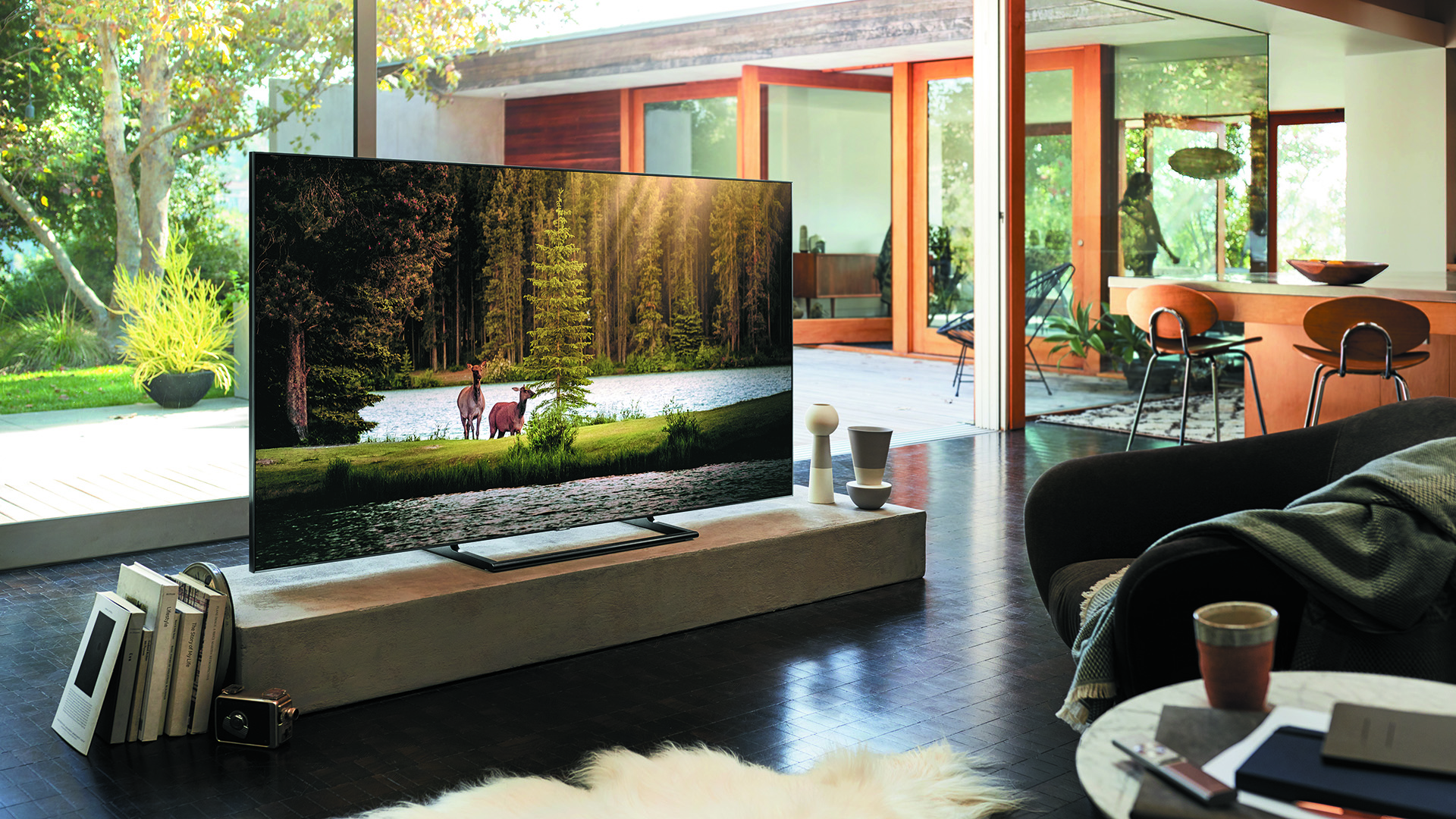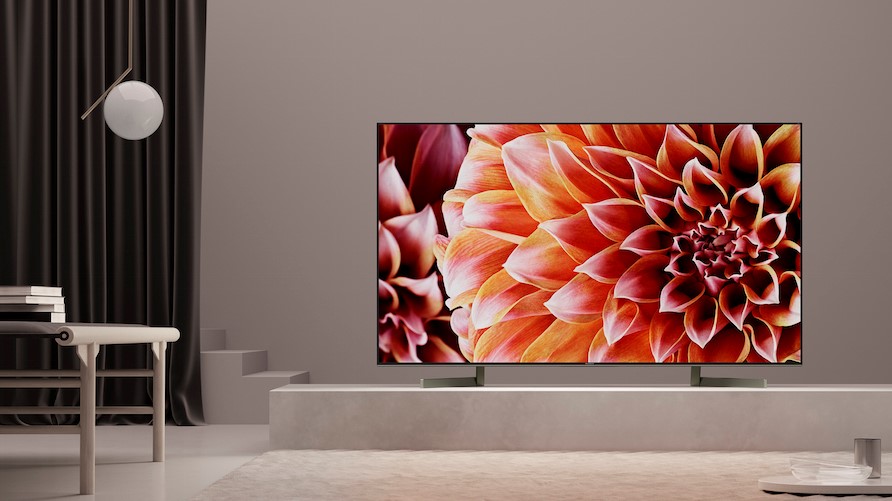TechRadar Verdict
The Sony 65ZF9 is a dizzying mix of delight and disappointment. Sony’s new X1 Ultimate processor is terrific, delivering numerous subtle but cumulatively outstanding improvements to TV picture quality. It breaks new ground for LCD with its viewing angles, too. Unfortunately, though, the 65ZF9 abandons some of the backlight controls that worked so well for the ZD9, with distracting results.
Pros
- +
Bright, colourful HDR pictures
- +
Excellent video processing
- +
More affordable than expected
- +
Wide viewing angle support
Cons
- -
Backlight clouding issues
- -
Contrast not the best
- -
Vocal track issues
- -
Requires careful set up
Why you can trust TechRadar
From the moment Sony revealed that it was finally going to introduce a sequel to what is arguably one of the most important TVs of all time, the ZD9 series, we’ve been counting down the days waiting for the first ZF9 model to arrive.
Now, finally, the 65-inch KD-65ZF9 is here. And it’s turned up packing an all-new, ultra-powerful video processor, as well as the latest (improved) version of Android TV, and an effective viewing angle so wide you’d almost think you were watching an OLED TV.
What’s more, despite these apparent improvements, at £2,800 it’s also much cheaper than the 65ZD9 was when that first launched. Wowza.
It all sounds too good to be true, doesn’t it? As it turns out, maybe it is.

Design
In truth, design is not a particularly exciting area for the 65ZF9. Yes, its slightly textured finish is quite smart, and the way channeling in the TV’s feet and a selection of detachable rear panel covers keep all your cabling tucked neatly away is pretty neat, but there’s anything particularly glamorous about its dark grey frame and slightly chunky rear.
The 65ZF9’s connections are pretty much exactly as we would expect of a high-end TV: four HDMIs, three USB ports, plus Ethernet and wireless network options.
That said, the HDMIs are ‘only’ built to the v2.0 standard rather than the upcoming v2.1 standard. This is true, though, of every other TV on the market right now (and probably right through until the latter part of next year).
Sign up for breaking news, reviews, opinion, top tech deals, and more.
And actually, Sony has managed to get one key feature supposedly associated with HDMI 2.1 onto the 65ZF9in the form of eARC support that allows you to pass lossless Dolby Atmos and DTS:X soundtracks through the TV from a 4K Blu-ray player to a separate audio system.
Design TL;DR: Although it’s not the most glamorous TV in town, the ZF9's cable management system is impressive, it’s well built, and its finish is promisingly ‘serious’.

Smart TV (Android)
There’s good news and bad news here: The bad news is that the 65ZF9 relies on Android TV for most of its smart functionality. This has consistently underwhelmed from the moment it first arrived on TVs back in 2015, thanks to its clunky, full screen presentation, over-crowded ‘shelf’ layout, bugs, crashes, sluggishness, endless updates, app overload and lack of focus on the sort of content TV users (rather than smartphone users) tend to want.
The good news is that the 65ZF9 is one of the first TVs we’ve seen to use the very latest 8.0 version of Android TV, and this does, thankfully, introduce some significant improvements. Its presentation looks crisper; it does a more intuitive job of implementing core TV functionality such as settings, input selection and live TV features; and there’s more focus on prioritising the video streaming content that most TV users care about.
The system ran much more slickly and quickly than the previous Android implementation too. It's hard to know if the extra processing power comes by was of Sony’s new X1 Ultimate chipset or Android 8.0’s improvements, but whatever the reason, we’ll take it.
Sony has also equipped the 65ZF9 with a YouView app. This brings together the catch-up apps for the UK’s main terrestrial broadcasters into one easy to use interface. Which is handy, as Android TV doesn’t actually provide some of these key UK catch up apps.
Smart TV Features TL;DR: YouView is a very handy feature for the UK market, and it’s a relief to see Android TV finally evolving for the better.

HD/SDR Performance
The 65ZF9’s handling of HD sources is outstanding. Its new X1 Ultimate processor does an unprecedentedly good job of adding the millions of extra pixels needed to convert HD to 4K, introducing more colour nuance and depth as well as the more predictable pixel density and detail enhancements.
Source noise is removed pretty much completely in the upscaling process too, without leaving the resulting picture looking softened or ‘plasticky’. This outstanding noise management makes X1 Ultimate exceptionally flexible when it comes to working with different qualities of sub-4K content. On a par with the upscaling prowess of Samsung’s recently reviewed 8K debutante, the 85Q900R.
The 65ZF9 applies an automatic and undefeatable HDR conversion to standard dynamic range images with all of its picture presets bar the Custom and Cinema options. This converter works great in most ways, opening up the colour palette without making it look forced or uneven, and doing an intelligent job of extending the image’s light range in only the right places and to just the right degree. Unlike many rival HDR conversion systems, it doesn’t try too hard.
The only issue with the HDR upconversion is that its extra brightness introduces more potentially distracting backlight clouding issues than you get with the much lower light levels associated with ‘native’ SDR playback. This is enough of an issue for me to suggest that you stick with a preset that doesn’t apply HDR conversion when viewing SDR content - at least if you’re watching TV in a fairly dark setting.
HD/SDR Performance TL;DR: Fantastic upscaling makes every sub-4K source look much better, and makes good quality HD sources actually look almost 4K. SDR playback looks good at fairly ‘native’ light levels, but backlight issues creep in if you use the SDR to HDR converter modes.

4K/HDR Performance
4K HDR content should be where the 65ZF9 really comes into its own. Unfortunately, though, if anything things go slightly downhill for one simple but persistent reason: an unexpectedly underwhelming backlight performance.
For instance, dark scenes, especially with HDR images, tend to look rather grey thanks to the screen’s difficulties with hitting a really deep black colour. This comes as quite a shock given that Sony’s 65ZD9 delivered some of the best black levels ever seen from an LCD TV.
The unwanted surprises continue when what you’re watching has bright HDR elements appearing against relatively dark backgrounds. Really noticeable clouds of light ‘leakage’ can appear around the bright objects - and these can extend a good few centimetres across the dark backdrops, too. Again, this happens much more often and more noticeably than it did on the ZD9.
This ‘blooming’ effect can even extend quite routinely into the black bars you get above and below images with wider-than-16:9 aspect ratios, at which point it can become very distracting indeed. Especially if what you’re watching has lots of movement in it, so that the blooming artefacts keep moving around the image and within the black bars.
You don’t even need to be watching bright HDR objects appearing against complete blackness for the blooming to be noticeable. Very bright objects such as wall lights can cast strange circles of greyness onto the non-black walls behind them, for instance, subtly adjusting the colour of those parts of the wall in the process.
All of this is totally unexpected given our experience of the Sony ZD9. After all, the 65ZF9 joins the ZD9 in using a direct lighting system (where the LEDs sit right behind the screen). And it also uses local dimming to ensure that different clusters of those LEDs can output their own light level, independently of their neighbours.

Closer investigation, however, uncovers at least part of the problem: While the 65ZD9 used more local dimming zones than we could easily count (seemingly more than 600), the 65ZF9 only deploys around 100. This immediately makes it much harder for the 65ZF9 to ensure that light only appears where it’s supposed to appear in a picture.
Sony states that the X1 Ultimate processor includes new algorithms that improve how cleverly the dimming zones apply themselves to the 65ZF9’s pictures. But it’s pretty clear that this isn’t enough to compensate fully for the loss of so many dimming zones.
Another possible contributing factor to the 65ZF9’s black level and blooming issues is actually one of its most ground-breaking strengths: its exceptional (for an LCD TV) viewing angle support. You can watch the 65ZF9 from almost right angles without it losing colour or contrast in the way you see with any other LCD TV.
This is a fantastic innovation that tallies perfectly with Sony’s stated intention with the 65ZF9 of trying to make an LCD screen behave/perform like Sony’s own, professional BVM-X300 OLED mastering monitor (a favourite of film and TV mastering studios). Seeing the various black level issues, however, you have to wonder if the mysterious ‘optical processes’ deployed to achieve this viewing angle breakthrough have had a negative impact on contrast.
It’s worth adding, too, that while the 65ZF9 solves the colour and contrast issues associated with wide LCD viewing angles, watching from an angle can cause the light blooming issues noted before to become more aggressive.

Thankfully, Sony’s X1 Ultimate processing engine is a piece of work, in all the very best senses of that phrase.
We’ve already noted what a fantastic job X1 Ultimate does of upscaling lower resolution sources to 4K. But it also makes native 4K sources look exquisite. Its ability to define and render a huge range of colours with exceptional finesse and accuracy joins with the processing’s ruthless suppression of noise and processing artefacts to deliver an emphatic 4K experience painted in much more than mere pixel numbers.
The sense of depth and clarity is stunningly lifelike, enticing you into whatever bright scenes you’re watching arguably more than any other TV picture before (bar the native 8K images recently witnessed on Samsung’s monumental 85Q900R).
This prowess is present, too, in the 65ZF9’s handling of action scenes which, even in their default settings, Sony’s motion options do a superb job of reducing judder without making the image look processed or causing nasty side effects such as edge haloing or flickering. This is due in no small part to the 65ZF9’s X-Motion Clarity system: a combination of black frame insertion technology and clever manipulation of the direct backlighting and local dimming system that makes motion look remarkably cinematic and clean without the loss of brightness usually associated with black frame insertion.
Colour saturations are extreme, meanwhile, without looking unnatural or short of detail, and the image is beautifully bright in just the sort of way it needs to be to unlock impressive amounts of HDR’s potential ‘drama’ - and the wider colour range/volumes that go with it.
Measurements reveal that the 65ZF9 can output around 1570 nits of brightness in its Cinema mode (on a 10% white HDR window), 1650 nits in its Vivid mode and, strangely, only around 1250 nits in its Standard mode. These are high figures bettered only by a handful of rivals - and my best guess is that the lower brightness of the Standard mode reflects the fact that Sony is trying to strike a good balance there between brightness and limiting the screen’s backlight issues.
4K/HDR TL;DR: Sony’s new X1 Ultimate processing is a real step forward - and arguably the best all round video processing engine around today. Unfortunately, though, the 65ZF9’s backlighting flaws are sometimes so distracting that they’re all you can see.

Sound
The 65ZF9’s audio is fairly impressive; good enough, anyway, to mean you can get away without having to add an external audio solution right away.
Its speakers have enough power to produce fairly extreme volume levels without sounding forced or lumpy, and even at nearly top volume there’s no cabinet rattling or speaker buzzing to spoil the show.
Detail levels are high with both movie and music sources, and high pitched effects sound well rounded rather than harsh and exposed. There’s a decent amount of depth and presence to the 65ZF9’s bass as well, and the sound is projected an impressive distance from the screen, boosting its immersive qualities and clarity.
There are, though, a couple of issues: First, dialogue sometimes - especially with male voices - seems to emerge from the bottom edge of the TV, so that it sounds slightly dislocated from the onscreen action. Second, while the soundstage is large, it doesn’t project forward into your room much.
Sound TL;DR: The 65ZF9’s sound isn’t particularly direct and dialogue can seem dislocated from onscreen lip movements from time to time. It can go loud without crumbling, though, and delivers lots of detail and dynamics.

Other panels to ponder
The closest direct rival for the 65ZF9 is the Samsung Q9FN QLED(65Q9FN). The Samsung gets even brighter, thanks to sporting far more dimming zones, delivers deeper black levels and suffers less with blooming backlight artefacts. Its colour range is colossal too. This all adds up to a superior dark room/movie viewing experience. That said, however, the Sony delivers marginally sharper 4K images, slightly better upscaling, and more shadow detail.
Another option if you are willing to sacrifice a chunk of HDR brightness in return for immaculate black levels would be an OLED model such as the LG C8 OLED65C8 or, if you want a really powerful built-in sound system, the Philips OLED+903.
Final verdict
Sony has a serious winner on its hands with the 65ZF9’s new X1 Ultimate processor. There’s scarcely any aspect of TV picture quality that it doesn’t touch and improve. Sadly, though, this major step forward in video processing has been accompanied by an unexpected step backwards with the 65ZF9’s backlighting system that can sometimes make the processing’s efforts hard to appreciate.

John has been writing about home entertainment technology for more than two decades - an especially impressive feat considering he still claims to only be 35 years old (yeah, right). In that time he’s reviewed hundreds if not thousands of TVs, projectors and speakers, and spent frankly far too long sitting by himself in a dark room.
